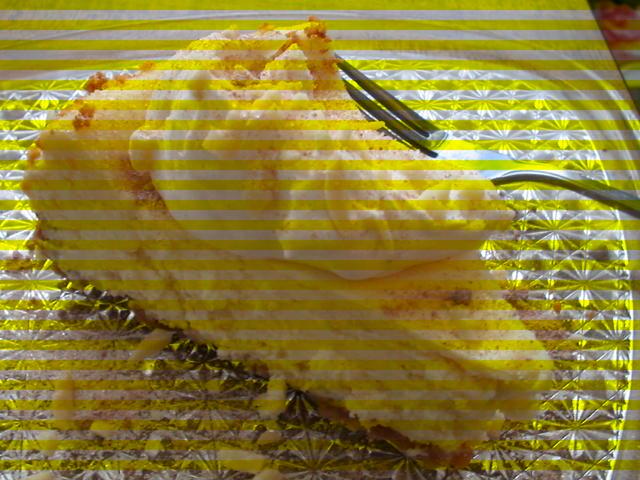CS1026 Computer Science Fundamentals I (Java)
Lab 7: nested loops
Objectives
Preparation
Exercise 0: single loops
Run the following in the Interactions pane. In each case, can
you predict what the value of sum will be after execution? Note:
reset the Interactions pane after each question.
int i = 0;
int sum = 0;
while (i < 10)
{
sum += i;
i++;
}
int i = 0;
int sum = 0;
while (i < 10)
{
sum += i;
}
int i = 0;
int sum = 0;
while (i < 10)
{
sum += i;
i++;
}
i = 0;
while (i < 10)
{
sum += i;
i++;
}
int i = 0;
int sum = 0;
while (i < 10)
{
sum += i;
i++;
}
while (i < 10)
{
sum += i;
i++;
}
int sum = 0;
for (int i = 0; i < 10; i++)
{
sum += i;
i++;
}
Exercise 1: single loops
In each case, write a loop (in the Interactions pane) that prints
the requested output (for the ones involving decimal points, it's OK
to obtain for instance 0.7000000001 or 0.6999999999 instead of 0.7).
0
1
2
3
4
5
6
7
8
9
0.0
0.1
0.2
0.3
0.4
0.5
0.6
0.7
0.8
0.9
0.9
0.8
0.7
0.6
0.5
0.4
0.3
0.2
0.1
0.0
Exercise 2: nested loops
In class, we implemented a method clearBlue() of
the Picture class that cleared the blue in all the pixels
of an image, by using the one-dimensional array representation of the imageand a single loop. In this exercise, you will implement a method
that does the same thing, using nested loops.
Add the following method definition to
your Picture class and fill in the blanks.
public void clearBlue2()
{
Pixel pixelObj;
// loop through the columns (x direction)
for (int x = 0; x < this.______________; x++)
{
// loop through the rows (y direction)
for (int y = 0; y < _______________; y++)
{
// get pixel at the x and y location
pixelObj = this.getPixel(x,y);
// set its blue to 0
pixelObj.____________________;
} //end of inner loop
} // end of outer loop
}
Compile Picture.java and test your method in the
Interactions pane.
Write the equivalent while loop, in a new method called clearBlueWithWhile.
Start again from the initial version and modify the inner
loop, by replacing y++ by y+=2 and test
again. Do you understand what is happening? Try again with y+=3 and y+=4
(optional and more challenging) Modify your method so that you obtain stripes of height 10
where the blue is alternatively cleared / not cleared, as on the following example. Before:
 and after:
and after:
 Hint: use a third nested loop.
Hint: use a third nested loop.
Exercise 3: progressive darkening
In this exercise, you will write an object
method progressiveDarken in the class Picture that will darken a picture, but
in a progressive manner, to obtain the following effect:

To achieve this, when you are dealing with the pixel at position x, y, store its red component in a
variable red and replace it
by red*x/getWidth(); do the same with the green and blue.
Exercise 4: looping through pixels
In this exercise, you will access pixels of an image by using its
one-dimensional array representation, as returned by the Picture
method getPixels()
In the Interactions pane, make a
variable pictureObj refer to a picture that contains the
image in the file butterfly2.jpg (in your mediaSources folder).
Get the one-dimensional array representation of the image by
Pixel[] pixelArray = pictureObj.getPixels();
Complete the following statement, filling in the length of the
array in order to show how many pixels there are in the image:
System.out.println("The number of pixels in the image is " + ___________ );
Write a loop that accesses the first 100 pixels in pixelArray
and prints each of them (using System.out.println).
Exercise 5: a method for looping through pixels
In this exercise, you will write a method randomChange() that modifies all
pixels in the picture. This method will be an object method in the
Picture class; it will take no argument, and have a
void return type (it will thus be similar to the
method decreaseRed() seen in class).
Math.random() is a static method of the class Math
that returns a random number between 0 and 1. If x is an int variable, (int)
(x*(1+(Math.random()-0.5)/5)) is the product of x
by a random number between 0.9 and 1.1. In randomChange, each component
(red, green, blue) of the color of each pixel will be replaced by the
result of the transformation above
Compile the file Picture.java and test your method
in the Interactions pane.
Exercise 6: copying an image
In the Interactions pane, make a variable pictureObj
refer to the picture turtle.jpg (in the mediaSources folder); let a variable pixelArray be its
array of pixels (as in exercise 2).
Create variables width and height, and assign
them the dimensions (respectively width and height) of the image;
use the methods getWidth() and getHeight()
Create a new picture pictureObj2
by Picture pictureObj2=new Picture(width, height); and create a
variable pixelArray2 that contains the array of pixels
for that picture
Run the following loop
int i = 0;
while (i < pixelArray.length)
{
Pixel currentPixel = pixelArray[i];
Pixel currentPixel2 = pixelArray2[i];
currentPixel2.setColor(currentPixel.getColor());
i++;
}
and show pictureObj2. What happened? Why?
Reset the Interactions pane, and redo the previous steps (you can use the up arrow to recall old statements), but this time create pictureObj2
by pictureObj2=new Picture(width, 2*height);. Run the same loop as
before. What happens?
Start over again; this time, change the loop so that the white lines are at the top of the picture.
Hint: what is the pixel at pixelArray2[i+width*height]?.


